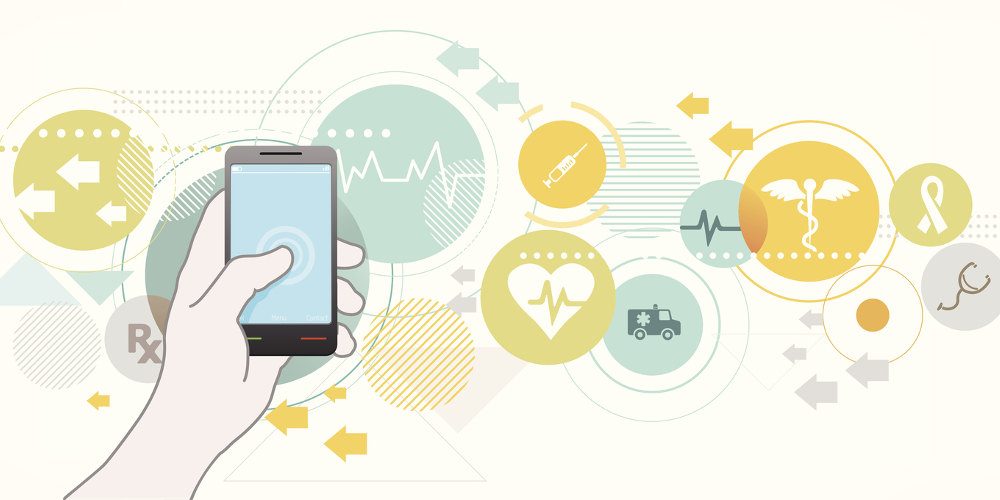How Connected Health Services Can Provide Opportunities for Traditional Security Providers
The home security and smart home spaces are well-positioned to include services that support independent living and caregiving for the aging generations.

If security system providers manage to integrate connected heath solutions into their monitoring services, they can expect to see a rise in subscriptions and payments in the near future.
Editor’s Note: SSI has partnered with Parks Associates for the creation of DIY FYI, a column designed to help dealers keep track of important smart home market developments, what the competition is and whether they want to jump into something they see as a new opportunity.
For traditional home security providers, the emergence of connected health products and monitoring services gives a new opportunity to serve consumers at home.
The number of Americans age 65 and older is expected to double, according to research from Parks Associates, resulting in the growing use and need of various connected health solutions, including PERS.

Over the next several decades, there will be an increased need and demand for smart home devices, on-demand services and security-related solutions aimed at improving the quality of life for seniors and enabling independent living.
With more than one-half of home security system owners currently using a personal emergency response system (PERS) or similar PERS products, companies in the home security and smart home spaces are well-positioned to include services that support independent living and caregiving for the aging generations of the U.S.
In the same way that security providers provide monitoring services for the home in case of intrusion, there is an opportunity to leverage this same technology to monitor individuals in the home in case of medical-related emergencies.
Safety and security is at the core of the home and is the key driver for security and connected health solutions alike. Security providers can diversify their consumer base by providing security related packages designed for protecting loved ones with connected health and independent living solutions.
The home is a focal point for consumer health and wellness as the healthcare system shifts from fee-for-service (FFS) to value-based care. The U.S. Department of Health and Human Services (HHS) aims to make 50% of all Medicare payments via alternative payment models by the end of 2018.
Many payment models make care providers responsible for patient outcomes, driving demand for connected solutions that quantify and address the gap in care between the facility and the home.

Payment reform, consumerization of care services and physician shortages create opportunity for connected health platforms and devices, as well as new channels to reach these consumers with these types of products.
For payers and care providers, much of the focus is on transitional and chronic care programs to bring down costs for high-claim/high-cost patients, although they diverge in short-term versus long-term view. Care providers are most focused on preventing 30-day readmission rates, while payers want to see costs curbed over the long-term.
This time of sustained wellness requires a deeper understanding and engagement with the consumer’s environment, their family, work life, diet and fitness regime, which favors companies with existing footprints in the home, like service providers, and those with experience monitoring home activities, like professional security monitoring and PERS monitoring companies.
Service providers, professional security monitoring and PERS monitoring companies are exploring their potential role in consumer wellness, remote patient monitoring and aging with independence. Providing solutions for aging consumers and their caregivers is a natural first step and will become increasingly necessary as demographic shifts in the U.S., Western Europe and Asia result in large elderly populations in the years to come.
Parks Associates research shows that in the last five years, the adoption rate of residential security systems has remained relatively constant. Overall, 51% of professionally monitored security systems in the U.S. had interactive services in 2017.
Interactive services, the ability to remotely control and monitor a security system via a smartphone, can be leveraged in a similar way with connected health devices to provide one connected platform.
With the growth rate of connected health products steadily growing, traditional security providers have an opportunity to utilize the momentum to expand into the market and position themselves as a comprehensive security solution for the home.
Consumers with security systems in place are willing to pay for in-home monitoring services that alert them of dangers and let family members know of any health emergencies, according to the firm’s research.
Among the 57% of home security owners using personal emergency response technology, their top five main service uses are professional monitoring, GPS and location driving, alerts sent to the appropriate individuals, 24/7 access to nurses and doctors, and regular check-in calls from a monitoring service.

Products like smart watches have already begun to integrate emergency alert systems that notify first responders and caregivers when someone is having a health emergency and can use GPS tracking to give the location of someone unable to articulate their whereabouts.
For traditional security providers, stepping into the connected device market for independent living services would give them a source of recurring revenue as owners of home security packages are willing to pay extra for monitoring services and alert systems.
For several years, interactive services and home control capabilities have driven RMR growth and interactive services contribute to the success of security system sales by providing consumers the ability to remotely control and monitor their systems while also enabling greater engagement with the system.
If security system providers manage to integrate connected heath solutions into their monitoring services, they can expect to see a rise in subscriptions and payments in the near future.

Dina Abdelrazik joined Parks Associates in 2016 as a part of the connected home team. She has participated in numerous smart home projects and has authored reports on voice assistant technologies, smart home strategies and home security. Dina frequently speaks at industry events and briefs with many industry leaders about company and product developments. She currently studies market trends and consumer behavior, focused on emerging technology products and services.
Dina earned her MS in Marketing, with a concentration in Marketing Analytics, from the University of Texas at Dallas and a BA in Advertising from Southern Methodist University.
If you enjoyed this article and want to receive more valuable industry content like this, click here to sign up for our FREE digital newsletters!

Security Is Our Business, Too
For professionals who recommend, buy and install all types of electronic security equipment, a free subscription to Commercial Integrator + Security Sales & Integration is like having a consultant on call. You’ll find an ideal balance of technology and business coverage, with installation tips and techniques for products and updates on how to add to your bottom line.
A FREE subscription to the top resource for security and integration industry will prove to be invaluable.







